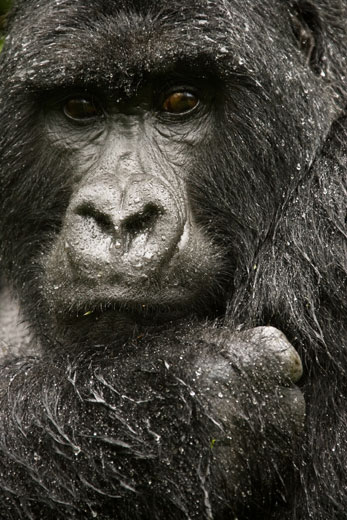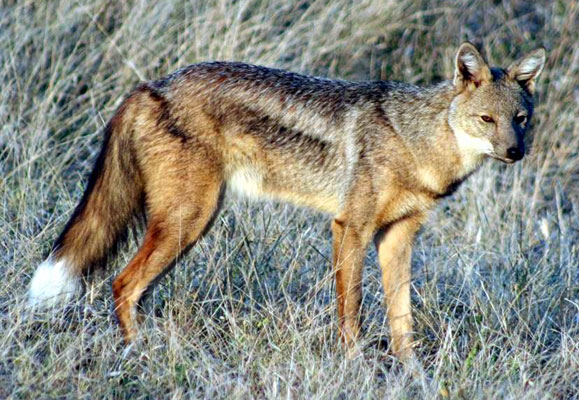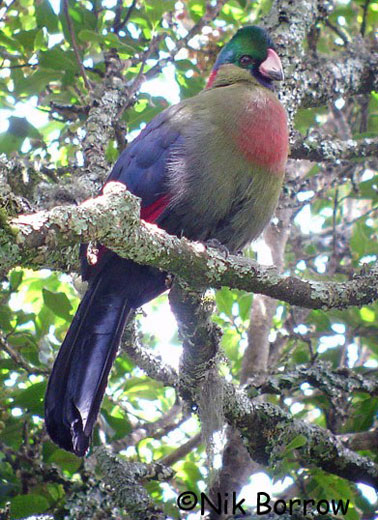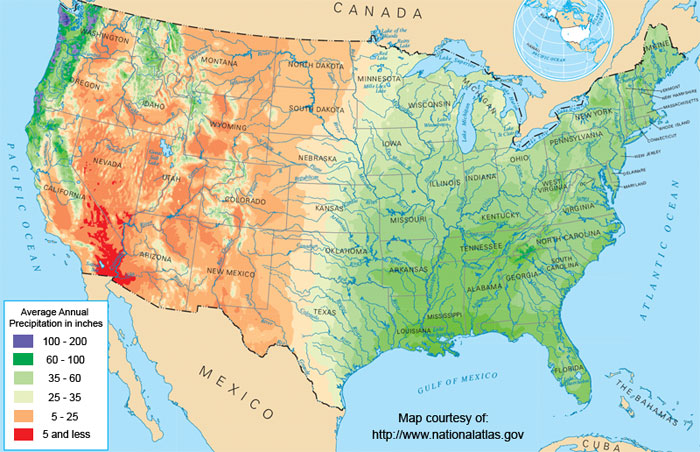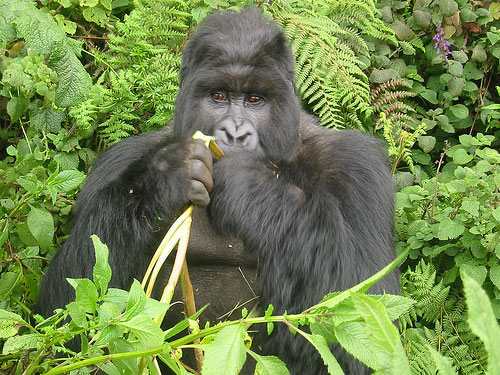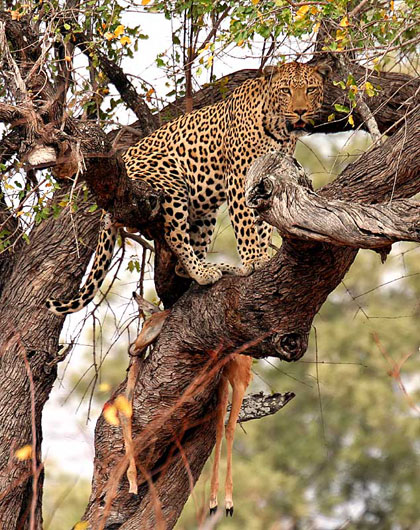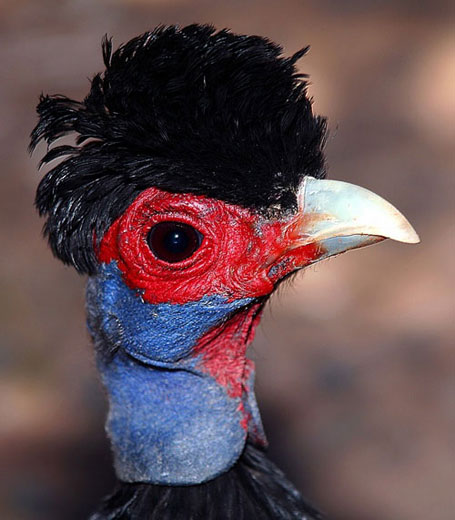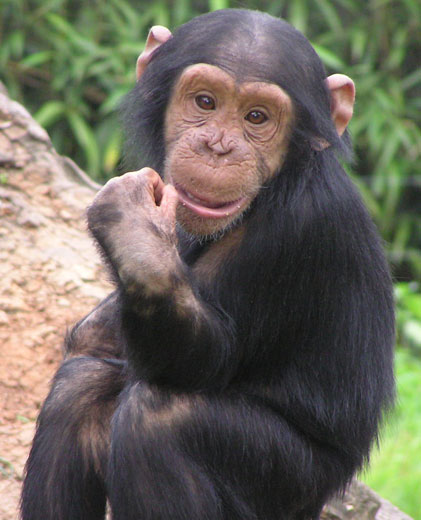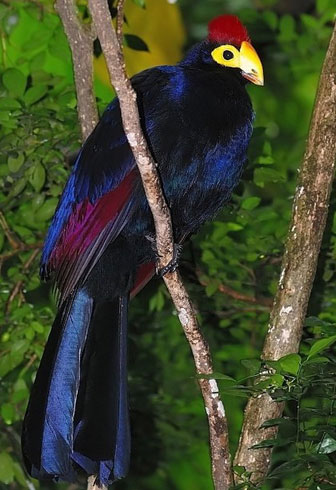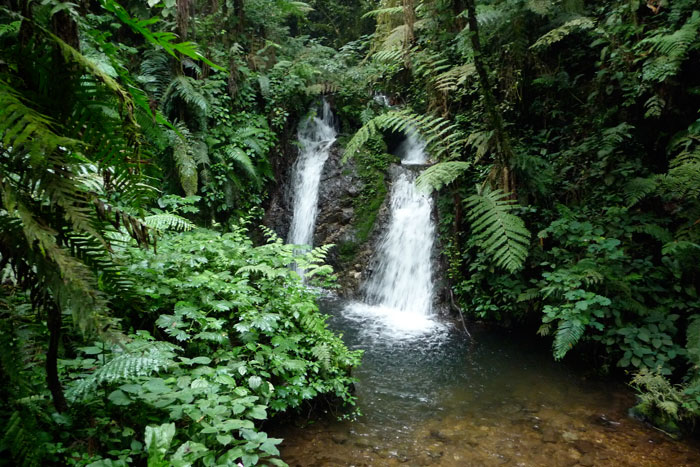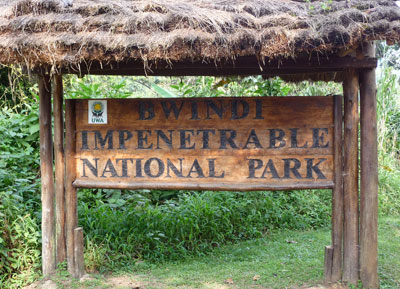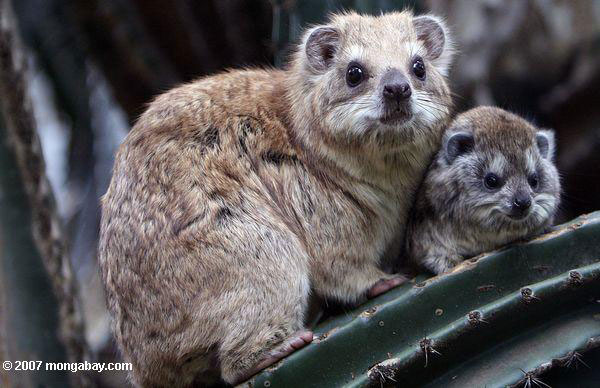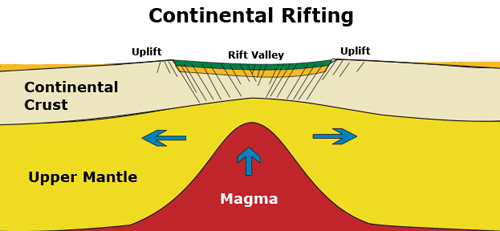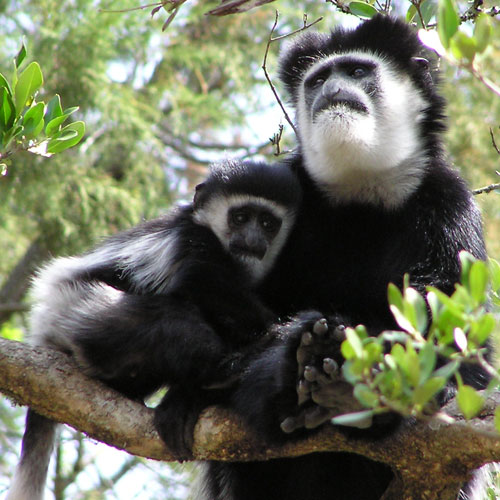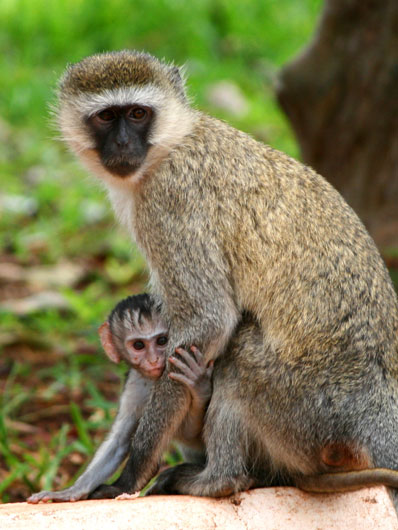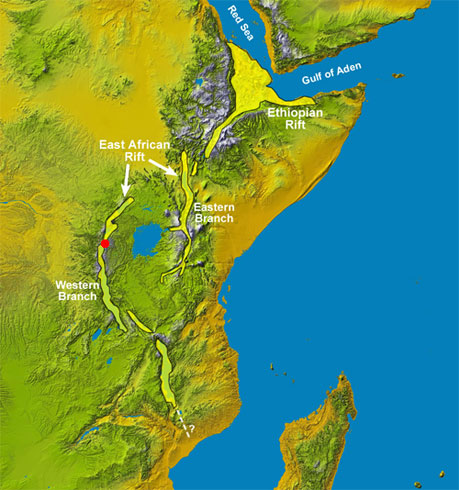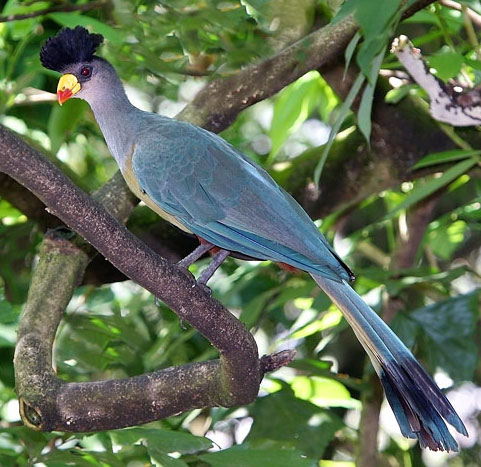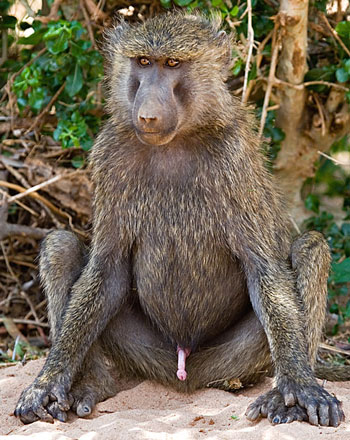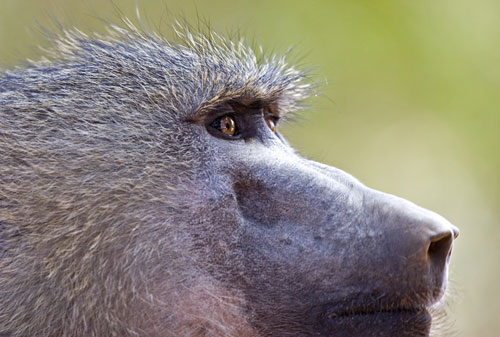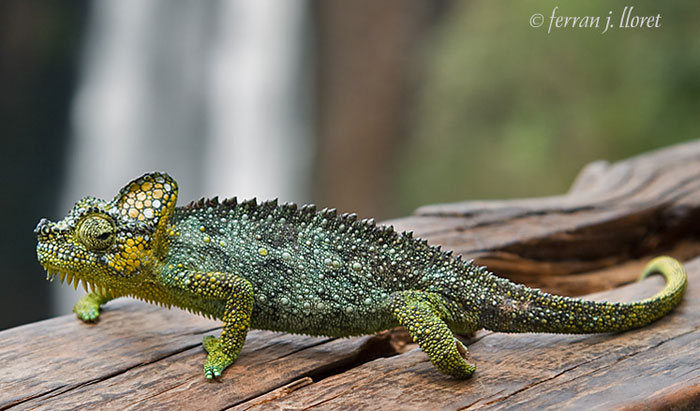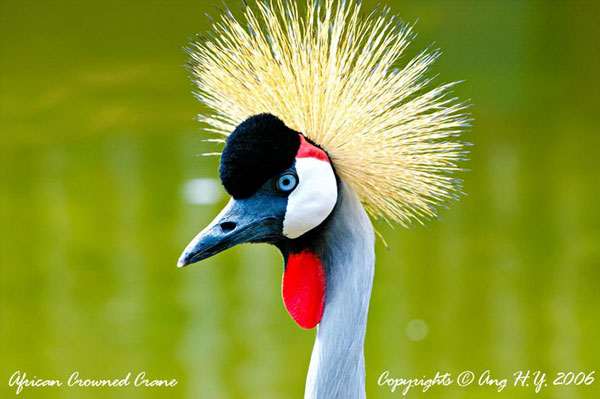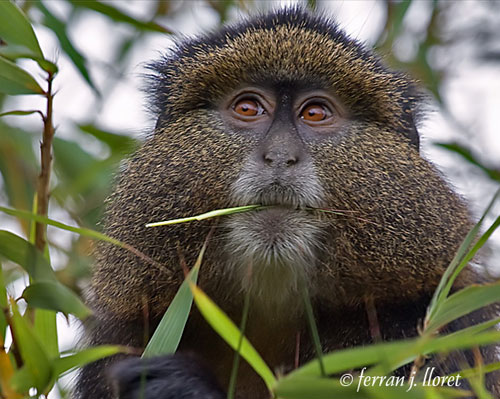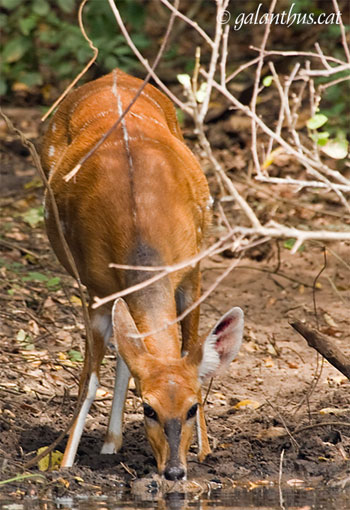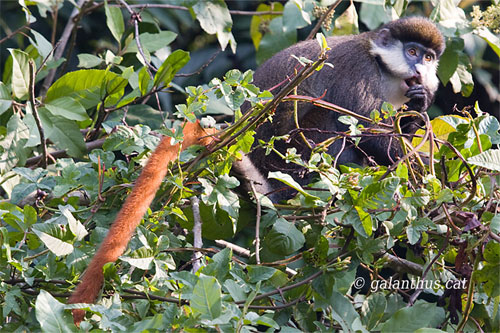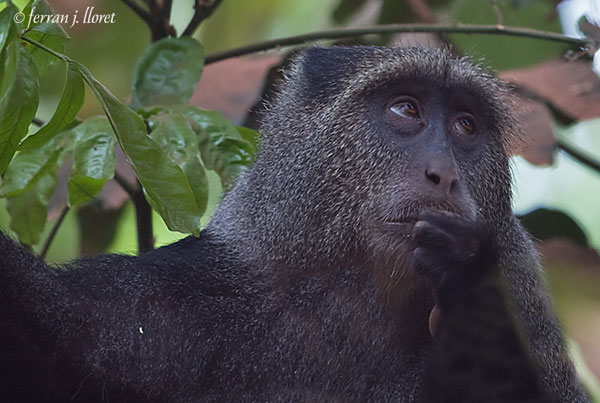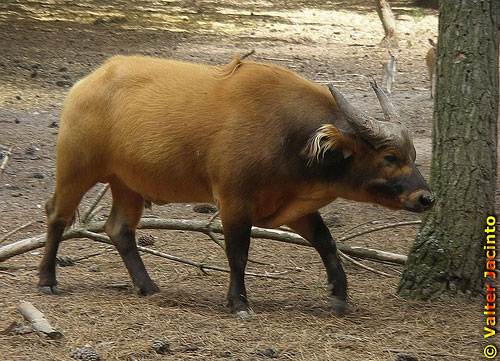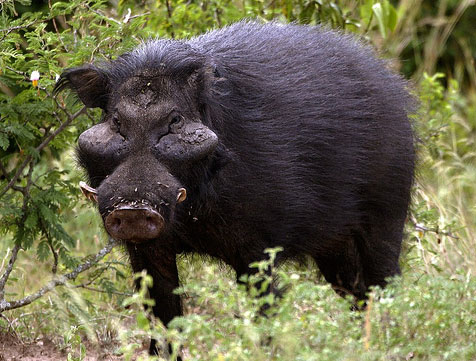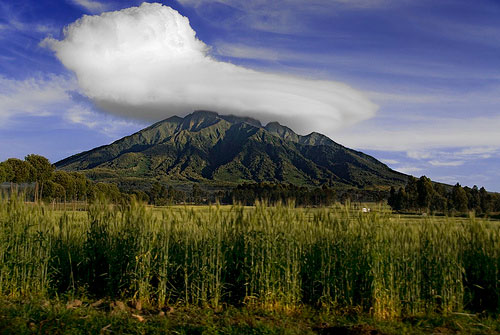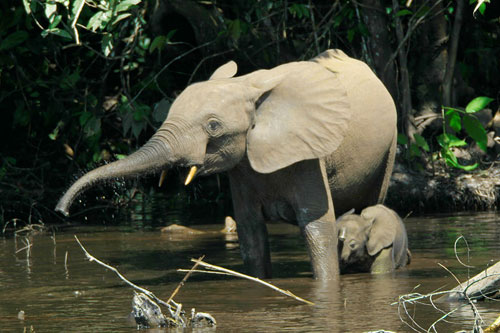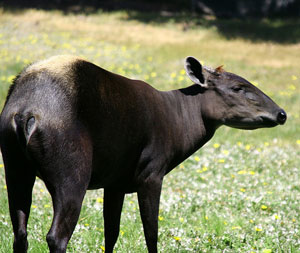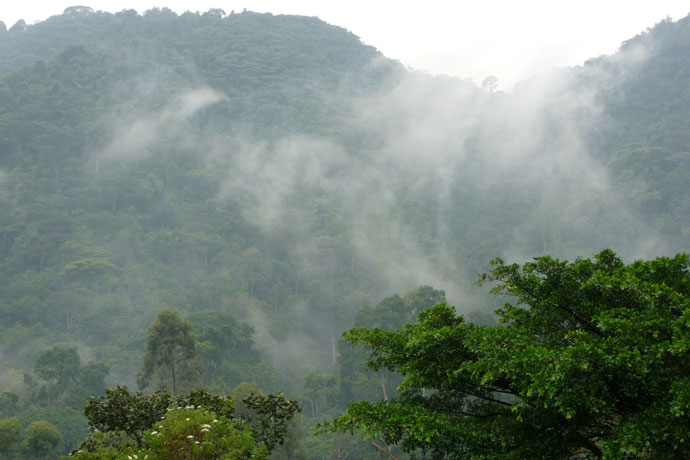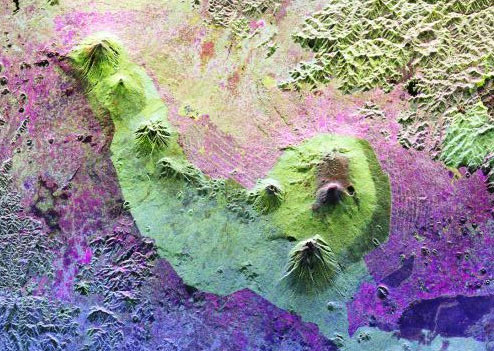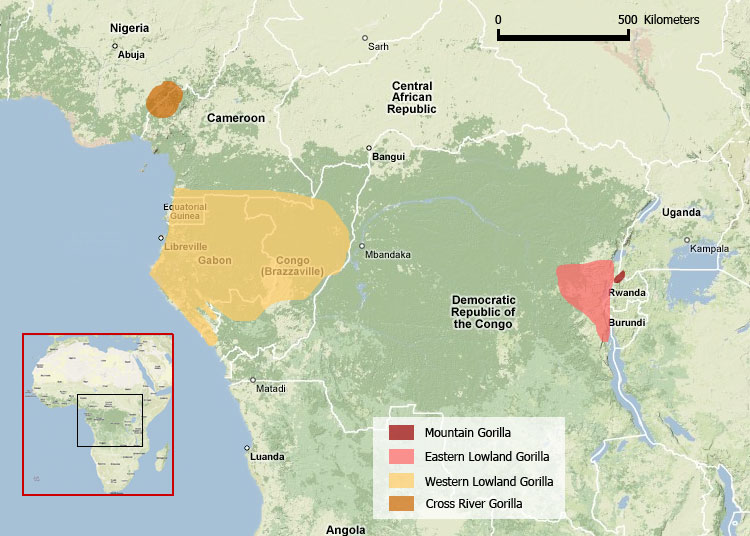|

- Geography
- The Virungas
- Bwindi
- Climate
Mountain gorillas are found in 3 countries in Africa: Rwanda, Uganda, and the Democratic Republic of the 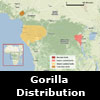 Congo(DR Congo). The gorillas live in a tiny area where these countries' borders meet, which is on the western edge of the East African Rift Valley. Their habitat is only about 780 sq km. This is an area smaller than some individual cities like London, New York City, and Los Angeles! Congo(DR Congo). The gorillas live in a tiny area where these countries' borders meet, which is on the western edge of the East African Rift Valley. Their habitat is only about 780 sq km. This is an area smaller than some individual cities like London, New York City, and Los Angeles!
There are two separate populations of mountain gorillas, each of which live in their own small patch of afromontane forest about 40 km from each other. The forests were once connected. However, it is believed that they became 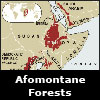 separated about 500 years ago by people clearing the forests for wood and farmland. This area is now occupied by towns, farms, and roads, so it is impossible for the gorillas to migrate between these two islands. separated about 500 years ago by people clearing the forests for wood and farmland. This area is now occupied by towns, farms, and roads, so it is impossible for the gorillas to migrate between these two islands.
When you think of an island, you think of land that is surrounded by water, right? Actually, an animal’s habitat that is surrounded by unsuitable habitat can be considered an island too. And just like an 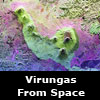 animal is ‘’trapped” on an island in the ocean, gorillas are not able to leave these small areas of forest that have not yet been cleared by loggers or farmers. animal is ‘’trapped” on an island in the ocean, gorillas are not able to leave these small areas of forest that have not yet been cleared by loggers or farmers.
These two islands are different in many aspects, including their origins, soil, plant life, elevation, and endemic species of animals. Because of these differences, especially the vegetation on which the gorillas feed, some primatologists think that they are splitting into two separate subspecies. However, the differences are extremely minor since 500 years of separation is not enough time to evolve different characteristics.
One population lives on the steep slopes of 8 extinct volcanoes where the borders of the 3 countries above meet. They are called the Virunga Mountains. 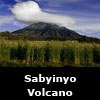 Virunga means “a lonely mountain that reaches the clouds”. Each of these countries have their own national park in the Virunga Mountains and are contiguous. The Virunga National Park in the DR Congo (a UNESCO World Heritage in Danger site), the Volcanoes National Park in Rwanda, and the Mgahinga Gorilla National Park in Uganda. The highest volcano is 4507 meters high. Virunga means “a lonely mountain that reaches the clouds”. Each of these countries have their own national park in the Virunga Mountains and are contiguous. The Virunga National Park in the DR Congo (a UNESCO World Heritage in Danger site), the Volcanoes National Park in Rwanda, and the Mgahinga Gorilla National Park in Uganda. The highest volcano is 4507 meters high.
The vegetation is thickest in the lower elevations and gradually lessens the higher you go. Most mountain gorillas here live between 2500 and 4000 meters, which can be freezing at times and include hail and snow. The black soil of the Virungas comes from volcanoes, so they are rich in minerals. This provides enough nutrients for the plants to grow so densely that some have described their habitat as a salad bowl. These verdant woodlands are the cloud forests made famous in the movie “Gorillas in the Mist”, which is the story of Diane Fossey.
Some of the other large animals that live in the Virungas are duikers, forest elephants, giant forest hogs, forest buffaloes, bushbuck, golden monkeys, and blue monkeys. Carnivores include leopards, golden cats, servals, spotted hyenas, and side-striped jackels. They are all mainly nocturnal. Lots of birds, including the spectacular rwenzori turaco, and the grey crowned crane also thrive in the gorillas’ habitat.
The other population lives in the Bwindi Impenetrable Forest, which is also a UNESCO World Heritage site, but is not on their in danger list. Although both were created by continental rifting, they differ in several ways. Bwindi was created by uplift of the earth crust 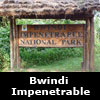 through tectonic movement and not as a result of volcanic activity. The erosion that followed deposited tons of minerals that later became rich red earth, which now lies beneath spongy forest humus. The lower valley bottoms also contain lots of clay, which doesn’t allow water to drain, and so there are many swamps. These swamps, along with the dense vegetation, are almost impossible for humans to walk through, thus the name Impenetrable. through tectonic movement and not as a result of volcanic activity. The erosion that followed deposited tons of minerals that later became rich red earth, which now lies beneath spongy forest humus. The lower valley bottoms also contain lots of clay, which doesn’t allow water to drain, and so there are many swamps. These swamps, along with the dense vegetation, are almost impossible for humans to walk through, thus the name Impenetrable.
Bwindi is also lower in elevation than the Virungas and tops out at 2,607 meters. Most mountain gorillas here live between 1,100 and 2,600 meters, It has remained a forest for millions of years while most other forests in Africa have come and gone due to climate change throughout the ages. Because of this, it is home to more than 350 species of birds, 200 species of butterflies, and 100 species of mammals. 10 species of primates make Bwindi their home, including about half of the world’s population of mountain gorillas. other forests in Africa have come and gone due to climate change throughout the ages. Because of this, it is home to more than 350 species of birds, 200 species of butterflies, and 100 species of mammals. 10 species of primates make Bwindi their home, including about half of the world’s population of mountain gorillas.
Some of the animals that live in Bwindi are duikers, forest elephants, forest buffaloes, bushbuck,
tree hyraxes, giant forest hogs, golden cats, striped jackels, and clawless otters. Primates include chimpanzees, blue monkeys, red-tailed monkeys, black and white colobus monkeys, vervet monkeys, and olive baboons. Beautiful birds, including the great blue turaco, ross's turaco, and the crested guinea fowl live in the forest, along with chameleons, frogs and insects.
Due to their proximity, both the Virungas and Bwindi share a common climate. There is a lot of precipitation where mountain gorillas live, more than 200 centimeters annually. The air is misty, damp, and cool, especially during the wet seasons,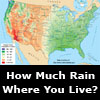 which are during March and April, and September through December. There are also two dry seasons: January – February and May – August. Temperatures range from 4° - 15° Celsius, though they may reach 26° C. When its raining heavily, the gorillas become dormant. Their pear shaped bodies minimize the surface area exposed to the elements. This, along with their thick fur, allow them to stay warm, even in cold, wet conditions. which are during March and April, and September through December. There are also two dry seasons: January – February and May – August. Temperatures range from 4° - 15° Celsius, though they may reach 26° C. When its raining heavily, the gorillas become dormant. Their pear shaped bodies minimize the surface area exposed to the elements. This, along with their thick fur, allow them to stay warm, even in cold, wet conditions.

|
|
|
39° - 58° Fahrenheit
adj. Green with grass or other rich vegetation.
78° F
n. The natural home or environment where
an animal, plant, or organism lives.
80 inches
n. Any form of water, such as rain, snow, sleet,
or hail, that falls to the earth's surface.
n. The state of being near or next to something.
4,000 and 8,000 feet
8,551 feet
n. A brown or black organic substance made from decayed
vegetable or animal matter that provides nutrients for plants
and increases the ability of soil to retain water.
n. Natural processes, including weathering,
abrasion, and corrosion, by which material
is worn away from the earth's surface.
adj. Relating to, causing, or resulting from
structural deformation of the earth's crust.
adj. Impossible to penetrate or enter.
adj. Sharing an edge or boundary; adjacent.
8,200 and 13,100 feet
14,787 feet
v. To develop gradually, especially from a simple to
a more complex form: humans evolved from apes.
n. A person who studies primatology, which is the
branch of zoology that deals with primates.
adj. Native or restricted to a certain country or area.
adj. A term used to describe the plant and animal species common
to the mountains of Africa and the southern Arabian peninsula.
v. When an animal or person moves from
one region or habitat to another.
25 miles
300 sq miles
621 miles

